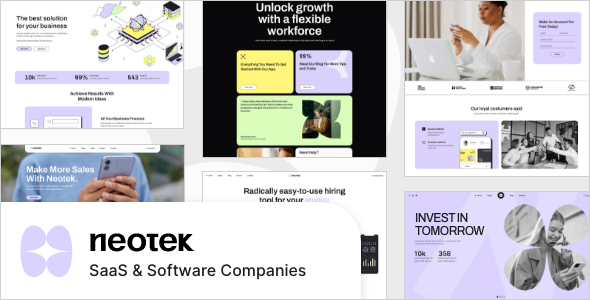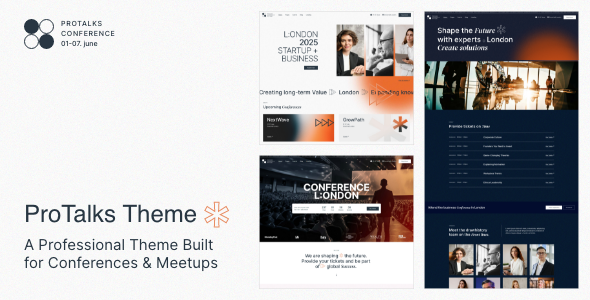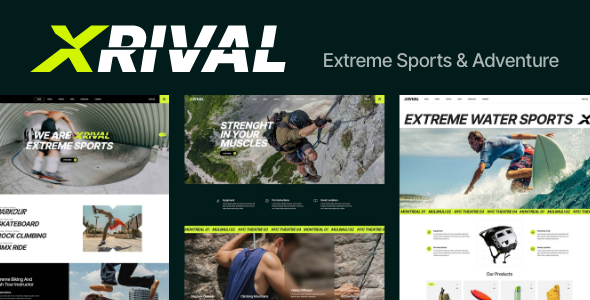A Complete Guide to Creating a High-Converting Sales Funnel in WordPress

Content is what draws visitors to your website through SERPs and keeps them coming back. But, if your online activities are centered on making sales, your content is only the beginning. What you‘re looking for is visitor conversion: turning your casual visitors into paying customers. And a sales funnel is how you do it.
In this article, we will be discussing the actions you need to take in order to build your website into a high converting sales funnel. But before we get into the details, we would like to take some time to discuss what a sales funnel actually is. If you are familiar with the basics, you may skip to the section you‘re most interested in.
Here‘s what we‘ll be talking about:

From the visitor‘s perspective, a sales funnel is a user journey which ends in the user making a purchase from the first visit to money changing hands. If you have set up an online store or are otherwise equipped to make sales, you already have a sales funnel implemented: it is simply a set of pages visited and actions taken from visiting the front page of the website to checkout and payment processing.
So what‘s the point of this article, then, we imagine you may be asking. Well, a sales funnel is one thing, but a high-converting sales funnel is something else. Or at least something different. With WordPress, anyone can create a website, and that includes online stores. Creating a successful website takes effort, time, and luck. And while we can‘t help you with luck and time, we can offer advice on how to direct your efforts.
You can never realistically expect that each and every one of your visitors will purchase something from your website. This is why the journey from visit to purchase is often visualised as a funnel: the bulk of visitors will be whittled down to the relative few who will be converted into eventual shoppers. There are many ways to optimize existing sales funnel structures in order to make them more efficient, more appealing, and better in terms of overall user experience , and so achieve a better conversion rate.
Awareness
Awareness represents the moment your prospect first becomes aware of your brand. There are many ways this might come to pass: an ad, a social media post, a Google search, a recommendation, or something else altogether.
With much luck, this is where their journey ends, too: they immediately like your product and they make a purchase. However, while those cases happen, they are outliers. In most cases, this is just the beginning. You need to nudge your prospects further down the funnel.
Interest
In the interest phase of things, the prospect has, well, taken an interest in what you‘re offering, and is doing their research: comparing deals and evaluating their options.
This is the stage where you need to establish yourself as reputable and interesting. Your content and other mechanisms need to work towards establishing your brand. The prospect, when choosing your brand above others, needs to feel like they are making an informed decision.
Decision/Desire
In this stage, the prospect is deliberating specifically about making a purchase from you. They have moved from being curious about something to actively wanting it. They are on the cusp of making a purchase. This is where things like discounts, calls to action, package deals, and other more forward sales tactics can work to your benefit: the prospect will ideally feel like they are purchasing something of value, and at a bargain.
Action
Action is where the buck stops. Ideally, the prospect makes a purchase. If they don‘t, it‘s still not the end of the world: they might still loop back down the funnel if they have a genuine need for your product. But, if they do, your work is not done yet: if you have made one sale, why not try and make another?
This is where you need to focus on customer retention. A happy customer will likely be a return customer, but you can do more: from simply asking your customer to provide feedback to offering them loyalty programs, you can use the final stage of the funnel to reach out and engage your customers, establishing a relationship with your brand.
However, it is not as straightforward as it may seem. People who are indecisive might loop back to an earlier stage of the funnel, a satisfied customer might return directly to the sales bit, or a person who has a real need for whatever it is you‘re offering might be sold on it from the outset.
Still, though reductionist, the funnel shape is helpful when planning out your marketing and sales strategy, as its various stages require different approaches. What you need to bear in mind is that real life is not as clear-cut as any model. There is overlap between the stages of the funnel, and, even with best efforts, the movement of your prospects is not always towards the final stage.

The top of the funnel is where your prospect is when they have a specific issue they are trying to address, are simply curious about something, or even just browsing the web. This is where you generate awareness for your brand.
This is where you need to hook your prospects into researching your brand more. There are several ways to do that, but the key point is to answer two major questions: how does your product help your customer, and, more abstractly, what is your brand all about? Answering these questions should inform your marketing and content creation strategies.
There is plenty you can do to make your prospects aware of your brand and coax them into the wider end of the funnel. And while some of what we suggest is optional, SEO, which we will touch on first, is mandatory.
Search Engine Optimization
If you want to do any kind of business online, you should at least have the basics of SEO nailed down. There is a popular adage that there is nothing so invisible as the second page of Google results. Making sure your content ranks high on search engine results pages is vital, as people who are looking for a solution to their problems will end up in the top stages of your sales funnel.
Traditional Marketing
Traditional marketing comes in many forms, but a well-placed ad might steer some customers your way. We are not talking solely about traditional media – they remain expensive and out of reach for most businesses. While you shouldn‘t altogether discount them, look into pay-per-click marketing: advertising your content on SERPS. This will generate awareness, and, ideally, traffic to your website, and more people will access your content.
Content Marketing
There is a lot we have to say about content-driven marketing, and we have, in our guide to content marketing. The way content marketing works for you in the initial stages of the funnel is by attracting prospects using engaging and shareable content (videos, blog posts, even social posts) which addresses your prospects‘ interests. They might not specifically want to make a purchase, but, with content, you are finding people potentially interested in what you‘re offering.
Social Networks
More and more people use social media to get informed and connected in general – in the past couple of years, for instance, the terms “internet user“ and “facebook user“ have almost become synonymous. If you post regularly, communicate with your followers, and time your posts well, you will generate engagement and, therefore, interest in your brand – even without resorting to social ads and sponsored posts.
Know Your Audience – And Your Competition
We wanted to go with the specifics first, but, in actuality, knowing whom you are trying to sell to goes first. Construct the identity of the imaginary person you are trying to reach, and invest in the best way of approaching them.
A teenage video gamer and a senior home improvement enthusiast will find different approaches appealing. They will, for instance, use different social media, have different modes of behaviour online, be willing to spend different amounts of time perusing new content, have different attitudes and habits regarding online influencers, and the like.
A good way of doing this is to take a look at what your competition is doing: read their blogs and social posts, watch their videos, and see how they engage with their readers, viewers, or followers.

Once you have generated interest in your brand, your prospects are in the middle of the funnel: they have formulated their need, and are genuinely convinced you might have an answer to it. Your prospects are doing real research, and you need to establish yourself as the authority in your niche.
Building Brand Authority
Brands do not just spring up out of nothing, fully formed: building brand authority through content requires a lot of work, and the details of it are beyond the scope of this article. We will be clear about one thing, though: consistency is key. It takes a lot of time and effort to create valuable content, but, if you want your visitors to start trusting you to know your stuff, you need to be consistent in creating relevant and useful content over a long period of time.
The content needn‘t just be blog posts: you may wish to look into starting a podcast, or start a YouTube channel to showcase the capabilities of your products, either through promotional videos or through helpful tutorials – such as ours, which show the details of how Qode’s themes and plugins work.
Nail the Landing Page
The landing page is what your prospect will see after clicking on something: typically an ad, a link in a social post, or a CTA. There is a lot to be said about the purpose and design of a landing page, but we will attempt to summarize it in brief here.
The purpose of a landing page is conversion, which is why you shouldn‘t overload it with content or navigation. You don‘t want the visitors who land on your landing page to wander off: you want them to take a specific action.
It doesn‘t even need to be a sale: you might want your visitors to sign up for a trial, subscribe to an email newsletter, download your ebook or spin the wheel and win a prize in exchange for their contact details. From overall design, through landing page copy, and down to the CTA, your landing page needs to offer enough enticement and enough information for your visitors to feel they are guided towards an informed action.
Taking our Qi Theme‘s landing page as an example, the visitor knows what the page is about immediately: they are offered a completely free theme packed with 100 demos. The download button (CTA) is prominent, right below the copy which promises first-rate design and premium features. A visitor looking for a professionally designed free theme need only click a button and download the theme. Scrolling down, they can see all of the theme’s demos, while a live chat feature appears after a very short while if the prospect has any questions.
Email Marketing
Other than the newsletters we have already mentioned, you should also be looking into the conversion possibilities of email marketing. In the middle of the funnel, you are not merely attempting to generate interest in your brand and increase the number of visits to your website: you are dealing with leads who have volunteered their emails because they are interested in your content.
You should use this to send out emails which generate interest in specific parts of your website, be that a new product, a special deal for your subscribers, testimonials, or exclusive content. Keep your emails relevant, fun, and interesting, and they will likely convert more subscribers to customers – especially if they contain well-designed CTAs.

This is where your prospects end up just before committing to a purchase, and therefore will not object to forward sales tactics – in fact, they will expect them. Here, your prospects are interested in making a purchase, but are wondering what a purchase will really cost them and whether they can get a better deal elsewhere.
Product Information
While a landing page is about generating immediate interest, you need to offer product details, with a good overview of the features of your product or service. You need to offer all the relevant information, say, in a pricing table, a side-by-side comparison with a competing product, or the like.
Time-Limited Offers
Again, in tune with the sales-forward approach at this stage, this is the time to introduce offers such as discounts, free trials, and other bargains which prompt the prospect to act now for that last bit of incentive.
Package Deals
If what your prospects are looking for is part of a package deal, they might be better incentivised to make a purchase, and the bottom of the funnel is letting them know such a possibility exists. A well-designed product bundle has other benefits, too: it may help you sell some of your less popular products.
Upselling
Upselling means offering a more expensive (and, for you, more profitable) alternative to whatever your prospect is interested in. If they are operating on a tight budget, that can‘t be helped, but if you make a good pitch based on feature comparisons and possibly some enticing photographs, you might make a pretty penny – provided you don‘t offer anything significantly more expensive. Your customers are not stupid: if they were considering something in a completely different price range, they would likely have gone for it in the first place.
Keeping It Simple
While you might want to avoid the overly forward approach at the initial stages of the user journey for fear of coming across as too aggressive, you also want to streamline the user journey as much as possible. From a design point of view, you want to accommodate both those who want to learn more, but also those who immediately want to make a purchase.
This is best achieved by separating your shop from the rest of your content, while still offering easy navigation to it, and creating engaging landing pages for your campaigns and flagship products. Nothing in sales is set in stone, and the fact that not everybody needs to pass through all the stages of an imaginary funnel is no exception.

Making a sale is great. Making more sales is, therefore, more great. The bottom of the funnel is your last and best chance to, again, convert a customer into a satisfied customer. The least you could do is thank them politely for their purchase. Even if they don‘t end up returning to the bottom of the funnel, they might refer their own contacts to you by word of mouth or social networks. Other than that, there are other sales strategies you might wish to pursue.
Loyalty Programs
Loyalty programs reward long-term customer commitment. They can be as simple as time-limited discounts for earlier customers, or exclusive email content, or as complex as lotteries or personalized points-based systems (perks for points). The key is to make a loyalty program worth your customers‘ while, or else they‘ll just forget about it after making a single purchase.
Next-selling
Next-selling means offering similar or related products after or during a purchase. For instance, you might guess that a person buying office furniture might also be interested in things like printers or desk lamps. If those are part of your inventory, you might want to offer them to that customer by email or even immediately after the completion of the purchase, as a “people who bought X also bought Y” section on a thank-you page.
Cross-selling
Cross-selling involves analyzing a recent purchase and offering a related product to your customer, whether after the sale or even near the end of the funnel.
A customer buying a car might take years before returning to your website looking for another car; that‘s not a purchase one makes every day, but they might immediately be interested in accessories or mechanic‘s services, while a person who just bought a mobile phone might also be on the lookout for a set of earbuds. If they are satisfied with your service, they will be very likely to accept your additional offer rather than invest the time to look for another deal.
Learn From Your Sales
Groups of customers tend to act in similar ways. To find out more about them, you can employ a tool such as Google Analytics to track their behaviour. How effective are your CTAs? What are your most popular blog posts? How many of your blog readers visit your shop? What about your YouTube viewers?
Use this data to inform your content creation strategy and give your readers what they want at the top of the funnel, and/or streamline the purchase process at the bottom of the funnel. Your customers provide you with more than just their money: they volunteer useful data as well.
In Conclusion
As we have said before, there are no hard and fast rules when it comes to marketing and sales – if there were, everybody would be doing the same thing over and over again with the same results, and we know from experience that it doesn‘t happen that way. Think of your ideal user journey and its stages both separately and as a whole, and use the tools at your disposal to make making a purchase from you feel like a sound choice and a pleasant experience. Make yourself easy to find online, easy to reach, reputable, and a good fit for your prospects‘ needs.







